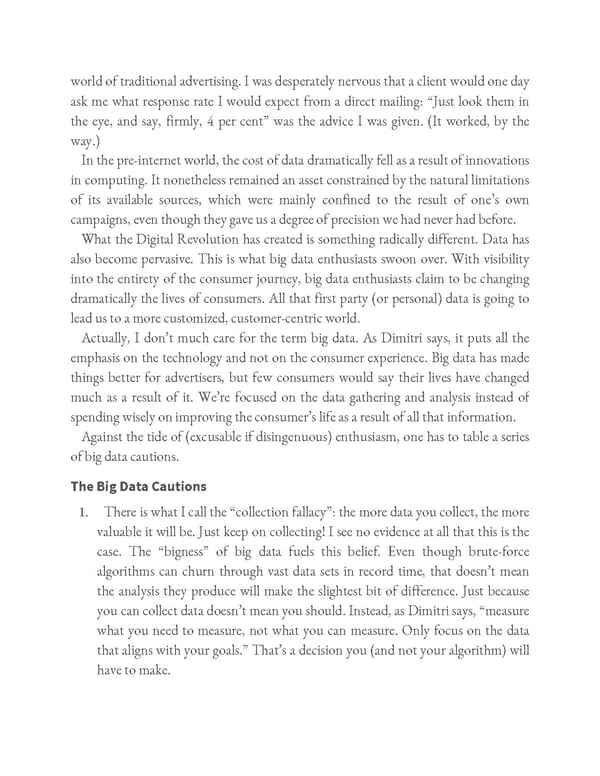world of traditional advertising. I was desperately nervous that a client would one day ask me what response rate I would expect from a direct mailing: “Just look them in the eye, and say, firmly, 4 per cent” was the advice I was given. (It worked, by the way.) In the pre-internet world, the cost of data dramatically fell as a result of innovations in computing. It nonetheless remained an asset constrained by the natural limitations of its available sources, which were mainly confined to the result of one’s own campaigns, even though they gave us a degree of precision we had never had before. What the Digital Revolution has created is something radically different. Data has also become pervasive. This is what big data enthusiasts swoon over. With visibility into the entirety of the consumer journey, big data enthusiasts claim to be changing dramatically the lives of consumers. All that first party (or personal) data is going to lead us to a more customized, customer-centric world. Actually, I don’t much care for the term big data. As Dimitri says, it puts all the emphasis on the technology and not on the consumer experience. Big data has made things better for advertisers, but few consumers would say their lives have changed much as a result of it. We’re focused on the data gathering and analysis instead of spending wisely on improving the consumer’s life as a result of all that information. Against the tide of (excusable if disingenuous) enthusiasm, one has to table a series of big data cautions. The Big Data Cautions 1. There is what I call the “collection fallacy”: the more data you collect, the more valuable it will be. Just keep on collecting! I see no evidence at all that this is the case. The “bigness” of big data fuels this belief. Even though brute-force algorithms can churn through vast data sets in record time, that doesn’t mean the analysis they produce will make the slightest bit of difference. Just because you can collect data doesn’t mean you should. Instead, as Dimitri says, “measure what you need to measure, not what you can measure. Only focus on the data that aligns with your goals.” That’s a decision you (and not your algorithm) will have to make.
 Ogilvy on Advertising in the Digital Age Page 216 Page 218
Ogilvy on Advertising in the Digital Age Page 216 Page 218